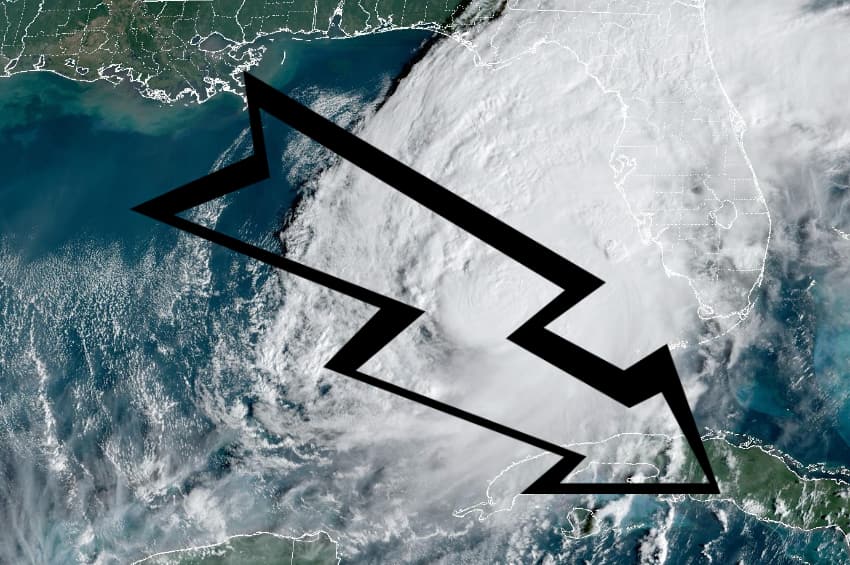Cat bonds marked down on hurricane Milton. NFIP FloodSmart Re bonds lead way

In the wake of hurricane Milton’s landfall and damaging impacts on the state of Florida last week the catastrophe bond market fell by 1.34% and a range of outstanding cat bonds had their secondary marks priced down, some more considerably than others.
Here we take a look at some of the catastrophe bonds that have been most affected by price moves in the weekly pricing sheets from cat bond trading desks and broker-dealers, although this is not an exhaustive list.
It’s important to note that according to sources and pricing sheet data seen by Artemis, there are numerous cat bonds with exposure to a Florida hurricane event, as well as aggregate bonds that include US wind, that have been marked down by small percentages, less than 10%.
Here though, we’re just looking at the bonds with the bigger markdowns. At this early stage, they seem the ones considered most exposed to potential losses, although as we’ve seen before that can change over time as loss events develop. It’s also important to note that even a significant price decline doesn’t necessarily mean an actual loss will be realised, as bonds can often recover and are marked more for the threat of losses early after an event.
Starting with the National Flood Insurance Program (NFIP) catastrophe bonds from FEMA, the FloodSmart Re series of deals that are exposed .
Markdowns here differ depending on which pricing sheet is looked at, with some brokers seeing the FloodSmart’s as more exposed than others.
But generally all the FloodSmart Re cat bonds are down, most by around 10% or higher and the riskiest layers down by between 30% and as high as almost 60% for the most risky tranche of notes.
The NFIP’s FloodSmart Re cat bonds begin attaching at a $6 billion loss event to the Program, while its traditional reinsurance attaches at $7 billion.
The cat bond tranche most at-risk is the $25 million Class C tranche of the $450 million FloodSmart Re Ltd. (Series 2022-1) issuance, with those notes the ones marked down between 40% and almost 60% across sheets.
It’s worth noting that there is still some uncertainty over whether hurricane Helene could result in a significant claims burden for the NFIP, but with hurricane Milton, the region most affected by surge sees some of the highest NFIP uptake in the country, we understand. That said, some of our sources do not feel the Milton surge loss would be as high as seen with Ian, which did not trigger any cat bonds. So it will be interesting to see whether the NFIP cat bond prices recover over the coming weeks, as the claims picture becomes clearer.
Next, some of the Florida focused cat bond issuances from specialist insurers operating there are considered at potential risk of losses from hurricane Milton.
The Integrity Re series of cat bonds sponsored by American Integrity Insurance have all been marked down, some closer to 20% but with riskier layers marked down as much as 55% on some sheets we’ve seen.
Slide Insurance Company’s Purple Re series of outstanding cat bonds have also been marked, ranging from just over 10% to almost a 30% decline for the 2023-1 notes.
Tower Hill Insurance Exchange’s catastrophe bond Winston Re Ltd. (Series 2024-1) is another Florida specialist bond that has been more heavily marked down, in this case with the Class A notes marked down by 12% on one sheet but more on another, the riskier Class B’s having been marked down as much as nearly 30%.
There are other Florida specialist bonds, such as the Bonanza Re deals from Progressive’s ARX Holdings and the remaining earlier ones from when American Strategic was the sponsor, which have all been marked, but fall into the bracket of below 10% declines.
In other areas of the cat bond market, one of the biggest downward price moves on hurricane Milton has been seen with the Atela Re Ltd. (Series 2024-1) notes that were sponsored by Nephila Syndicate Management Limited for its Lloyd’s Syndicate 2357.
The Atela notes provide industry-loss triggered annual aggregate coverage, including for named storms and seemingly as both hurricane Helene and Milton may well qualify, the broker pricing sheets have the riskier Class B tranche of notes marked down as much as 29%.
In other notable moves, the Herbie Re Ltd. (Series 2021-1) cat bond sponsored by Fidelis, which is an aggregate industry-loss based deal, was marked down 15% on one pricing sheet on Friday.
A number of Residential Re cat bonds sponsored by USAA were marked down by over 10%, and Hannover Re’s 3264 Re Ltd. (Series 2022-1) cat bond fell by 12.5% on one sheet, while Arch Capital’s Claveau Re Ltd. (Series 2021-1) cat bond was marked down by just under 10%, we understand.
There were no major price movements for well-known cat bond programs such as Allstate’s Sanders Re series, or State Farm’s Merna Re series, with just small price adjustments seen for them.
It’s worth referring you back to our article from Saturday, in which we revealed that the Swiss Re cat bond index fell by only 1.34% after Milton.
That relatively small move suggests a minimal loss for the cat bond market, so we do not expect every bond marked to face any losses and at least some of these will likely recover over time, it appears. However, it’s also worth noting that some losses are likely to occur, although precisely where they will fall is hard to define at this stage with great uncertainty still in how the claims burden will flow.
You can analyse details of every catastrophe bond in the Artemis Deal Directory.






